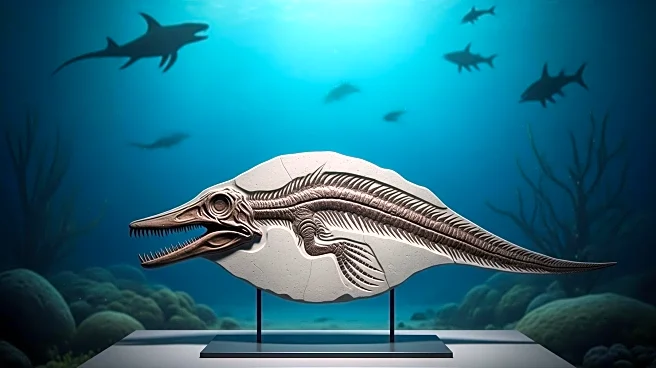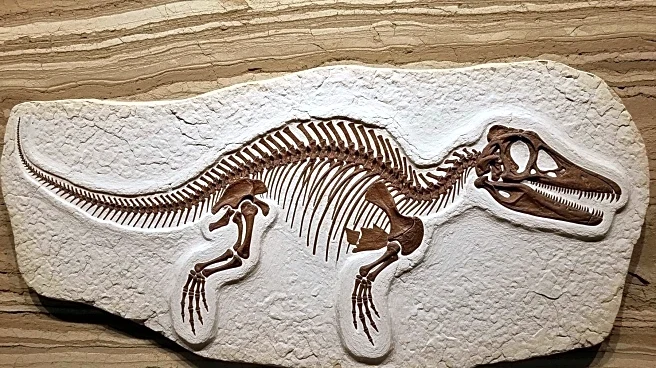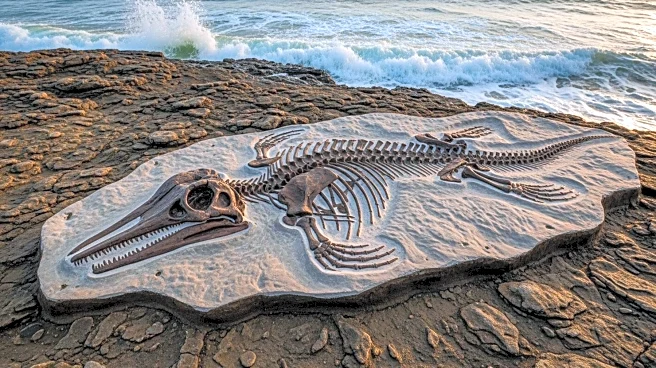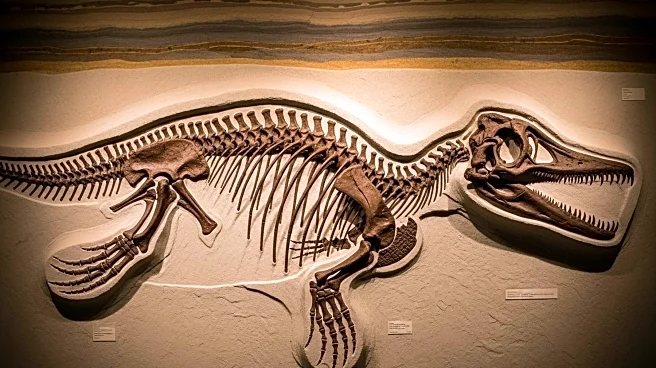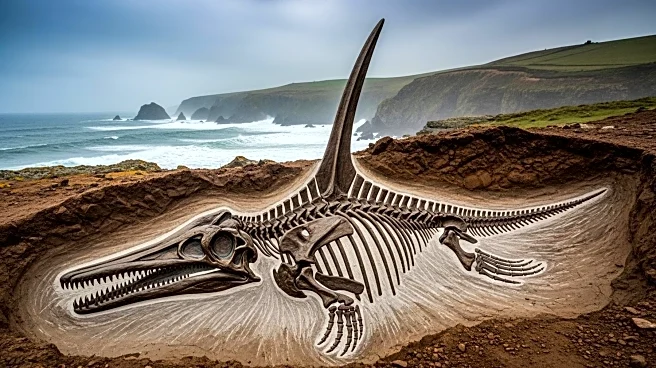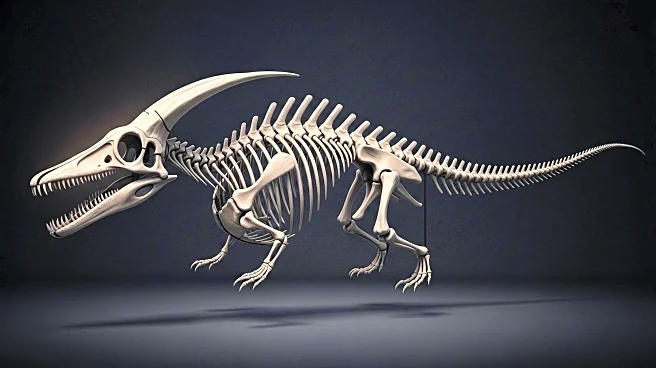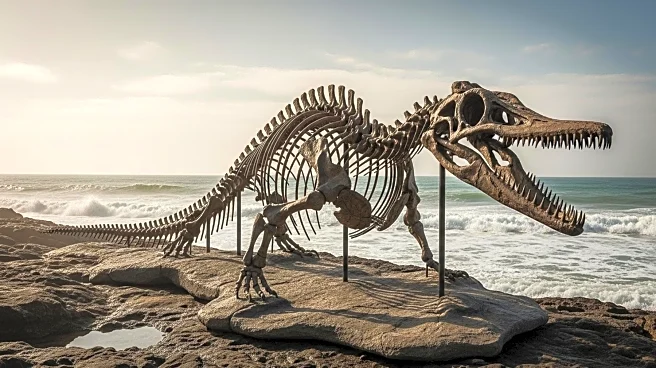What is the story about?
What's Happening?
A remarkable ichthyosaur fossil has been discovered along the Jurassic Coast of the United Kingdom, providing scientists with a rare glimpse into marine ecosystems of the early Jurassic period. The fossil, named Xiphodracon goldencapensis or the Sword Dragon of Dorset, was uncovered by collector Chris Moore. Unlike many ichthyosaur fossils that are flattened over time, this specimen remained fully three-dimensional, allowing for detailed anatomical study. The fossil features a long, sword-like snout and needle-like teeth, suggesting it was adapted for hunting squid and small fish. The discovery fills a crucial gap in understanding ichthyosaur evolution during the Pliensbachian period, as documented in the journal Papers in Palaeontology.
Why It's Important?
The discovery of the Sword Dragon of Dorset is significant for paleontology, as it provides new data on species diversity and evolution during the early Jurassic. The fossil's preservation offers an unmatched opportunity to study the anatomy of ichthyosaurs in life-like detail, contributing to a better understanding of marine life from 190 million years ago. This insight into early Jurassic ecology helps scientists understand the adaptations and ecological roles of marine reptiles during a period of significant ecological turnover. The fossil's unique features, such as its massive eyes and elongated snout, highlight the evolutionary adaptations of ichthyosaurs as predators in their environment.
What's Next?
Following the discovery, a second specimen was located and is now displayed at the Charmouth Heritage Coast Centre in Dorset. Public exhibitions of such fossils allow researchers and enthusiasts to appreciate the anatomical complexity and ecological significance of these marine reptiles. The continued study and conservation of fossils along the Jurassic Coast are essential for advancing scientific knowledge and understanding of prehistoric marine ecosystems. Future research may focus on further analyzing the unique anatomical features of the Sword Dragon and exploring other potential fossil sites along the coast.
Beyond the Headlines
The delay in the fossil's formal scientific description, spanning 24 years, highlights challenges in paleontological research, such as specimen preservation and analysis. The fossil's journey from discovery to scientific recognition underscores the importance of collaboration between collectors, museums, and researchers. Additionally, the public display of fossils like the Sword Dragon fosters educational opportunities and raises awareness about the significance of fossil conservation.
AI Generated Content
Do you find this article useful?
